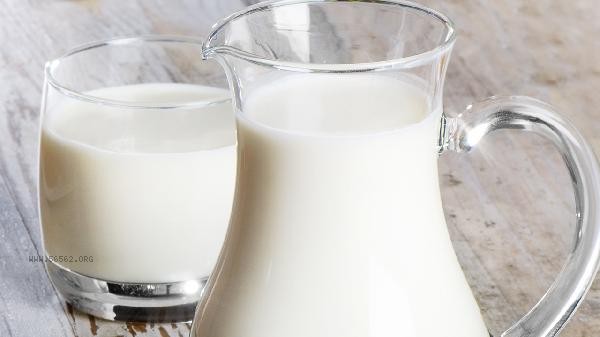Skimmed milk is milk that removes most of its fat, while whole milk retains its natural fat content. The main differences between the two are fat content, taste, and target audience.

1. Fat Content
Defatted milk is processed by centrifugation to remove fat, with a fat content typically below 0.5% and low calorie content. Whole milk has a fat content of about 3% -4%, retaining the original nutritional structure of milk and containing more fat soluble vitamins such as vitamin A and vitamin D. Skimmed milk is suitable for people who control their calorie intake, while whole milk is more suitable for those who need sufficient energy supplementation.
2. Nutritional Composition
Skimmed milk has similar protein and calcium content to whole milk, but lacks fat soluble vitamins. The fat in whole milk can help absorb vitamin D and promote calcium utilization. Skimmed milk may be fortified with vitamin D, but active ingredients such as conjugated linoleic acid in natural milk fat cannot be supplemented by adding it.
III. Taste Differences
Whole milk has a richer taste and milk aroma due to the presence of fat, while skim milk has a lighter taste. Fat molecules can carry flavor compounds, and whole milk is more suitable for cooking scenarios that require the involvement of milk fat, such as coffee latte art and baking. Skimmed milk may require the addition of emulsifiers to improve its taste.

IV. Applicable Population
Skimmed milk is suitable for weight loss, hyperlipidemia, and cardiovascular disease risk individuals. Whole milk is suitable for groups such as children and pregnant women who require high energy intake, and its fat plays an important role in the brain development of infants and young children. Fitness enthusiasts can choose according to their training goals, and full fat milk can be used during the muscle building period.
V. Storage Characteristics
Whole milk should be consumed as soon as possible after opening due to the easy oxidation of fat. Skimmed milk has a relatively long shelf life, but light exposure can still cause loss of vitamin B2. Both need to be refrigerated for storage. Ultra high temperature sterilized milk can be stored at room temperature, but it still needs to be refrigerated after opening.

The choice of milk type should be based on individual health status and dietary goals. The general healthy population can alternate drinking, which can control calories and obtain complete nutrition. If you experience bloating and diarrhea after drinking milk, you can try low lactose milk. Lactose intolerant individuals can choose fermented dairy products as a substitute. In daily diet, it is important to pay attention to the combination of grains, vegetables, fruits, and other foods to ensure a balanced nutrition and avoid relying solely on dairy products to supplement nutrition.








Comments (0)
Leave a Comment
No comments yet
Be the first to share your thoughts!